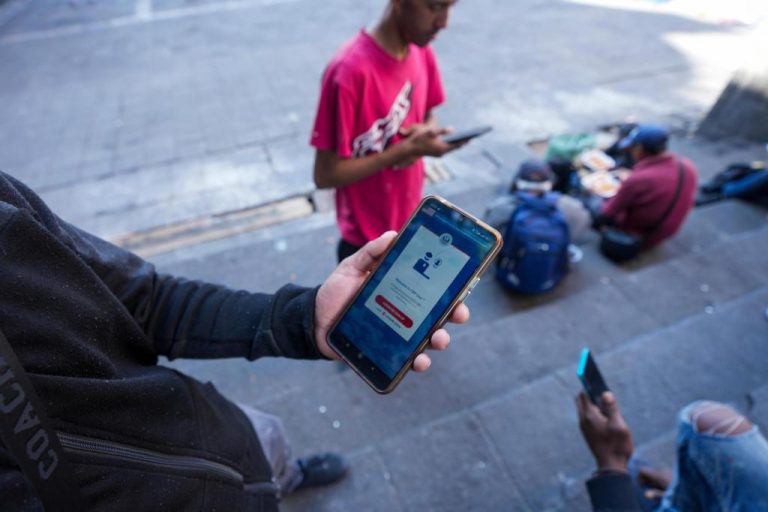US and Mexican officials have hailed the success of talks held on Wednesday aimed at curbing historically high unauthorized immigration across their shared, 2,000-mile border that risks becoming a humanitarian disaster and an election year political crisis for Joe Biden.
After the closed-door meeting between the US secretary of state, Antony Blinken, and the Mexican foreign minister, Alicia Bárcena, the Mexican president, Andrés Manuel López Obrador, hailed what he described as “important agreements” but did not elaborate.
López Obrador has pledged to help ease migratory pressures on Mexico’s northern neighbor while also calling on the US to invest more to help the poor in Latin America and the Caribbean “instead of putting up barriers, barbed wire fences in the river, or thinking about building walls”.
The US state department said the meeting would address “unprecedented irregular migration in the western hemisphere and identify ways Mexico and the United States will address border security challenges”.
The US secretary of homeland security, Alejandro Mayorkas, described the talks as “very productive”. He added that “the regional challenge of migration requires regional solutions, and we appreciate Mexico’s commitment to continue its efforts alongside us and with others”.
Illegal immigration threatens to become a major issue as campaigning for next year’s US presidential election moves into high gear. It’s also creating a crisis for northern state “sanctuary cities” who are pleading with the federal government for economic support to shelter migrant arrivals often bussed or flown up from Texas to Democrat-controlled cities by the state’s Republican governor, Greg Abbott.
On Wednesday, the mayors of Chicago, New York City and Denver renewed pleas for help and coordination. They said buses often arrive at all hours, outside designated drop-off zones, and with no passenger manifests.
“We cannot allow buses with people needing our help to arrive without warning at any hour of day and night,” the New York City mayor, Eric Adams, said at a news conference. “This not only prevents us from providing assistance in an orderly way, it puts those who have already suffered in so much in danger.”
By one measure, more than half a million people, many fleeing crime, poverty and regional conflicts, have crossed the Darién Gap jungle into Central America this year with many said to be heading to the US-Mexico border.
A single caravan of about 7,500 people, that began its journey on Sunday, is currently heading through the Mexican state of Chiapas toward the border. Luis García Villagrán, an organizer of the group, told NBC News that it included people from 24 countries, including Central American states, Cuba, Venezuela, Haiti, Turkey, Iran, Syria and Cameroon.
Images of the column of migrants has renewed pressure on US and Mexican officials to address the issue.
The Texas Republican congressman Tony Gonzales, whose district stretches from San Antonio to El Paso, said this week that immigration was greater than anything border officials have dealt with in the past three years. “We are absolutely at a breaking point, beyond a breaking point,” Gonzales said.
Earlier this month, US border authorities temporarily closed two key rail border crossings and shut others in order to redeploy enforcement resources to other migration choke-points.
After Wednesday’s meeting, the Mexican foreign minister Bárcena described reopening the crossings as a “priority” for Mexico. “We are talking about the economic part, as well as the structural causes of migration,” she added.
The balancing act between Mexico’s need to keep borders open for trade and the US need to curb illegal immigration is at the center of diplomatic discussions. Mexico’s response has included the bulldozing of a partially abandoned camp at Matamoros across from Brownsville, Texas.
One Honduran man told the Associated Press that about 200 people in the camp that had contained 1,500 were in effect forced to leave. The man, who gave only his first name, José, said authorities “ran us out” and the remaining migrants had been intimidated by the bulldozers. “You had to run for your life to avoid an accident,” he said.
About 70 people later attempted to cross the Rio Grande but became trapped for hours along the riverbank beneath the layers of sharp concertina wire.





